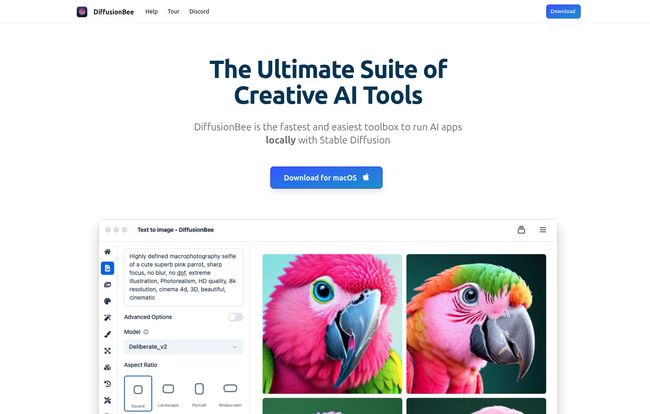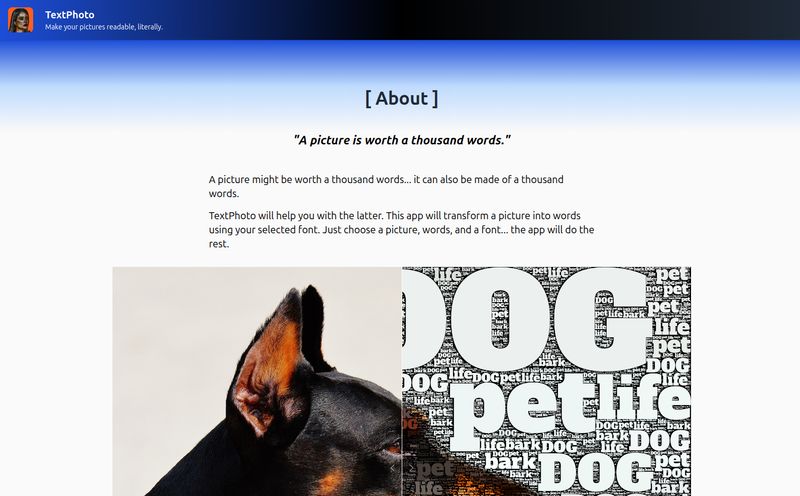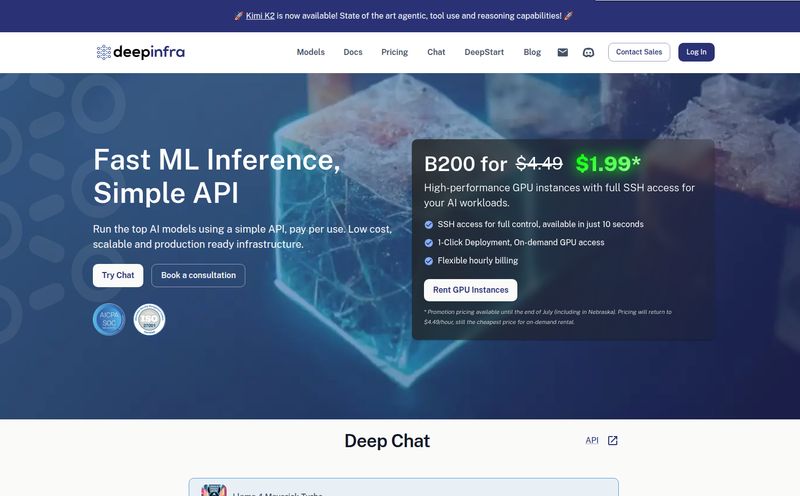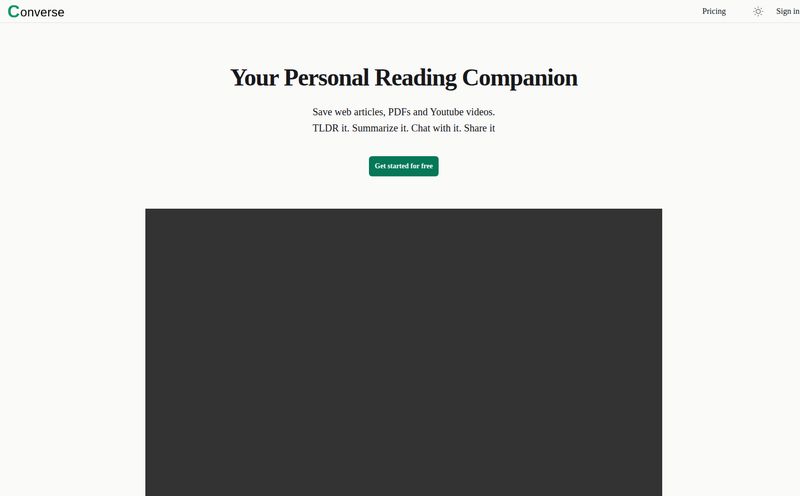We've all been there. You get sucked into the AI art vortex, maybe through Midjourney or DALL-E. It’s amazing! You're generating futuristic cities and photorealistic portraits of cats in astronaut suits. And then the bill comes. Or you run out of your 'fast hours' and are suddenly generating images at a snail's pace. The subscription model, the credit packs... it feels a bit like a digital arcade, constantly demanding another quarter to play.
For months, I’ve been juggling these subscriptions, telling myself it's a necessary cost for a professional in the creative/tech space. But a part of me, the part that remembers downloading software once and just... owning it, has been looking for an alternative. That's when I stumbled across DiffusionBee. The promise? All the power of Stable Diffusion, running right on my MacBook, completely free and offline. I was skeptical, to say the least. Free and powerful usually come with a catch. But I downloaded it anyway, and folks, I think this might be a game-changer.
So What Exactly is DiffusionBee Anyway?
Think of the powerful, open-source AI model Stable Diffusion as a ridiculously complex race car engine. It’s capable of incredible things, but to use it directly, you traditionally needed to be a 'mechanic'—someone comfortable with Python, command lines, and GitHub repositories. It's a headache for most of us.
DiffusionBee is the beautiful, simple dashboard and steering wheel for that engine. It’s a clean, user-friendly application for macOS that takes all that complexity and hides it behind simple buttons and text boxes. You download one app, and suddenly you have a complete AI art studio on your computer. The best part? Because it runs locally, none of your prompts, images, or data ever get sent to a cloud server. It's 100% private. In an age where we're all a little paranoid about who's seeing our data, that’s a massive win.
Getting Started Was Shockingly Simple
I was bracing myself for a complicated setup, but it was... well, it was just like installing any other Mac app. I went to their website, hit download, and dragged the application into my 'Applications' folder. That's it. No complicated installations, no wrestling with code dependencies. It just worked. You do need a fairly modern Mac (running macOS 13.1 or higher), but for anyone with a machine from the last few years, you're good to go.
A Full Creative Playground on Your Desktop
Once I opened the app, I was greeted with a whole suite of tools. This isn't just a basic text-to-image generator. It’s a comprehensive set of features that rivals some of the paid services out there.

Visit DiffusionBee
From Text to Image and Back Again
The core feature, Text to Image, is as straightforward as you'd hope. You type in a prompt—'a cinematic photo of a neon-soaked ramen shop in a rainy Tokyo alley'—and hit generate. But it goes deeper. You can tweak aspect ratios, add negative prompts (things you don't want to see), and select different models. The real magic, for me, is in the other tools. Image to Image lets you upload a starting picture and transform it with a prompt, which is fantastic for style transfers. And the Generative Fill (or inpainting/outpainting as its sometimes called) is incredible for editing. Got a great image with a weird-looking hand? Just paint over it and tell the AI to regenerate 'a perfect hand'. It's like Photoshop's content-aware fill on steroids.
Upscaling, Illusions, and Other Party Tricks
One of my biggest gripes with early AI art was the low resolution. DiffusionBee has an Image Upscaler built right in, capable of increasing the resolution of your creations without turning them into a blurry mess. It also includes an Illusion Generator, which is behind those viral 'hidden text' AI images you've probably seen all over social media. It's fun, a little gimmicky, but a great addition that shows the developers are keeping up with the latest trends.
The Real Killer Feature: Training Your Own AI Models
Okay, this is where my jaw really dropped. DiffusionBee has a simple interface for training your own custom models. This is a feature that is usually reserved for the most hardcore techies or expensive enterprise services. What does it mean? You can feed the AI a set of your own images—say, 20 photos of your dog, or a collection of your own artistic drawings—and it will learn that specific style or subject. You can then generate new images of 'your dog as a Roman emperor' or 'a new landscape in your unique art style'. For artists wanting to maintain a consistent aesthetic or businesses needing to generate product shots, this is absolutely revolutionary. And it’s included for free. Insane.
So, What's the Catch? A Look at Performance
Nothing in life is perfect, right? DiffusionBee's biggest 'catch' isn't about money, but about hardware. Because it’s using your computer's own power, the speed of image generation depends entirely on your Mac's specs.
I'm running it on an M2 MacBook Pro, and it’s pretty zippy. An image takes maybe 30-60 seconds to generate. Not instant, but fast enough. However, the documentation and community chatter are clear: if you're on an older Intel-based Mac, especially one without a dedicated graphics card, you're going to be waiting. It'll work, but it might take several minutes per image. It’s a trade-off: you're exchanging the speed of a massive server farm for the cost and privacy of local generation. For me, it's a price worth paying.
DiffusionBee vs. The Cloud Giants
To put it all in perspective, here's how I see DiffusionBee stacking up against the big cloud-based platforms like Midjourney.
| Feature | DiffusionBee | Cloud Services (e.g., Midjourney) |
|---|---|---|
| Cost | 100% Free | $10 - $120+ per month |
| Privacy | Total. Runs offline. | Your prompts/images are sent to their servers. |
| Speed | Depends on your Mac's hardware. | Very fast (using their powerful servers). |
| Customization | Excellent. Train your own models easily. | Limited or non-existent for average users. |
| Ownership | You own the process and the images. | Subject to their Terms of Service. |
My Final Verdict: Who Should Download DiffusionBee?
I've got to admit, I'm a convert. DiffusionBee isn't going to replace cloud services for every single person. If you're a high-volume commercial studio that needs thousands of images generated by tomorrow, the speed of a paid service is probably still your best bet. But for a massive group of people, DiffusionBee is a revelation.
This tool is perfect for:
- Hobbyists and enthusiasts who want to experiment with AI art without a financial commitment.
- Artists and designers who value privacy and want to train the AI on their own unique style.
- Small businesses or startups who need creative assets but are working with a tight budget.
- Anyone who is just plain curious about this technology and wants to try it in a safe, private environment.
It brings the power back to the user, putting a state-of-the-art creative tool right on your desktop. No gatekeepers, no credits, no subscriptions. Just pure, unadulterated creativity.
Frequently Asked Questions
Is DiffusionBee really 100% free?
Yes, it’s completely free. There are no hidden costs, subscriptions, or credit systems. It uses the open-source Stable Diffusion model and your computer's resources to run, so there are no server costs for the developers to pass on to you.
Where do the images I generate get saved?
Everything is saved directly on your computer's hard drive. The app creates a folder for your generations, giving you full, private ownership and control over your artwork.
Can I use the images I create for commercial purposes?
Generally, yes. DiffusionBee uses Stable Diffusion models, many of which (like the default SD 1.5) have very permissive licenses that allow for commercial use. However, it's always a good idea to check the specific license of any custom model you download and use.
How long does it take to generate an image?
This is the big 'it depends' question. On an Apple Silicon Mac (M1, M2, M3), it can take anywhere from 30 seconds to a couple of minutes depending on the complexity. On older Intel Macs, especially those without a strong dedicated graphics chip, it can be significantly slower.
Does DiffusionBee work on Windows or Linux?
As of right now, DiffusionBee is a macOS-only application. There is no official version for Windows or Linux, though the underlying Stable Diffusion technology can be run on those platforms through other (more complex) interfaces.
Conclusion
DiffusionBee democratizes AI art creation in a way I haven't seen before. It takes a powerful, slightly intimidating technology and makes it as easy to use as any other creative app on your Mac. The fact that it's free and private is just the icing on the cake. If you have a compatible Mac, I honestly can't think of a reason not to give it a try. Go download it. Spend an afternoon creating. You might be surprised at what you—and your computer—are capable of.



